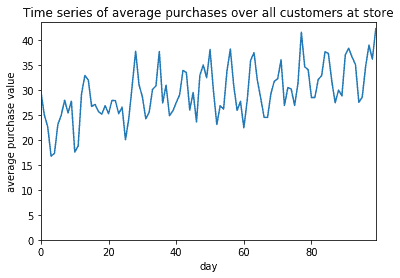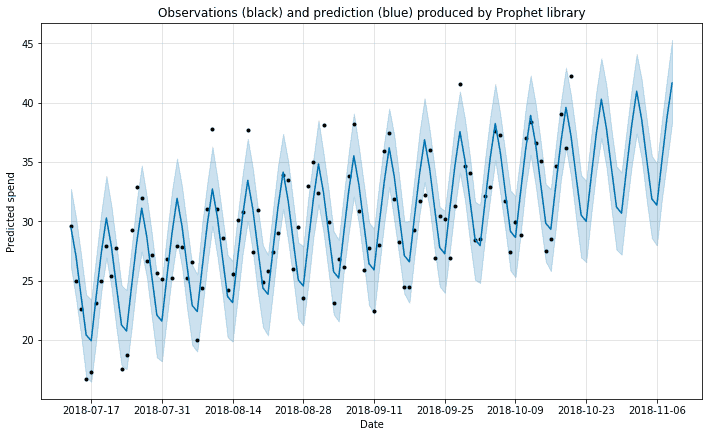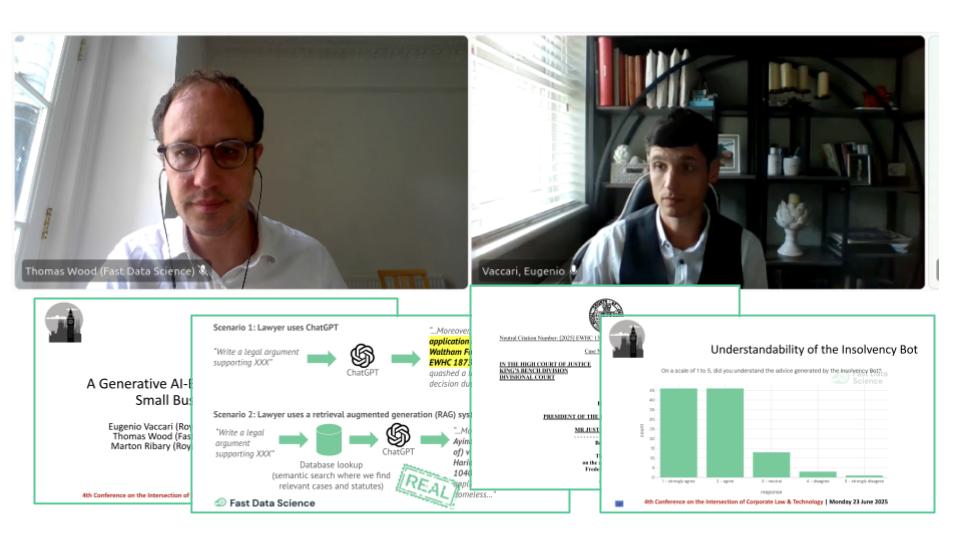
Earlier I wrote another post about predicting the spend of a single known customer. There is a related problem which is predicting the total spend of all your customers, or a sizeable segment of them.
If you don’t need to predict the spend of an individual customer, but you’re happy to predict it for groups of customers, you can bundle customers up into groups. For example rather than needing to predict the future spend of Customer No. 23745993, you may want to predict the average spend of all customers in Socioeconomic Class A at Store 6342.
Fast Data Science - London
In this case the great advantage is that you would not have so many empty values in your past time series. So your time series may look like this:

This means you can use a time series library such as Prophet, developed by Facebook.
Here’s what Prophet produces when I give it the data points I showed above, and ask it to produce a prediction for the next few days. You can see that it’s picked up the weekly cycle correctly.

This approach would be very useful if you only needed the data for budgeting or stock planning purposes for an individual store and not for individual customers.
However if you had small enough customer segments, you may find that the prediction for a customer’s segment is adequate as a prediction for that customer.
The next step up in complexity is multilevel models, where you use a different level of model for each region or economic group of customers, and combine them into a single group model.
To get the maximum predictive power you can try ways of combining time series methods with a predictive modelling approach, such as taking the results of a time series prediction for a customer’s segment and using it as input to a predictive model.
If you have a prediction problem in retail, or would like to some help with another business problem in data science or AI, I’d love to hear from you. Please contact me via the contact form.
Ready to take the next step in your NLP journey? Connect with top employers seeking talent in natural language processing. Discover your dream job!
Find Your Dream Job
Senior lawyers should stop using generative AI to prepare their legal arguments! Or should they? A High Court judge in the UK has told senior lawyers off for their use of ChatGPT, because it invents citations to cases and laws that don’t exist!

Fast Data Science appeared at the Hamlyn Symposium event on “Healing Through Collaboration: Open-Source Software in Surgical, Biomedical and AI Technologies” Thomas Wood of Fast Data Science appeared in a panel at the Hamlyn Symposium workshop titled “Healing Through Collaboration: Open-Source Software in Surgical, Biomedical and AI Technologies”. This was at the Hamlyn Symposium on Medical Robotics on 27th June 2025 at the Royal Geographical Society in London.

We presented the Insolvency Bot at the 4th Annual Conference on the Intersection of Corporate Law and Technology at Nottingham Trent University Dr Eugenio Vaccari of Royal Holloway University and Thomas Wood of Fast Data Science presented “A Generative AI-Based Legal Advice Tool for Small Businesses in Distress” at the 4th Annual Conference on the Intersection of Corporate Law and Technology at Nottingham Trent University
What we can do for you